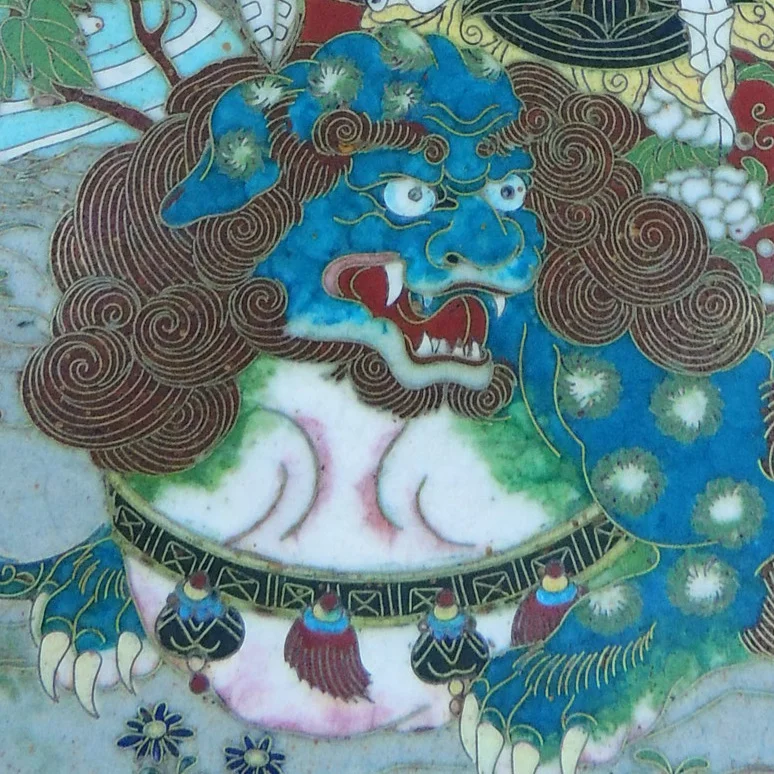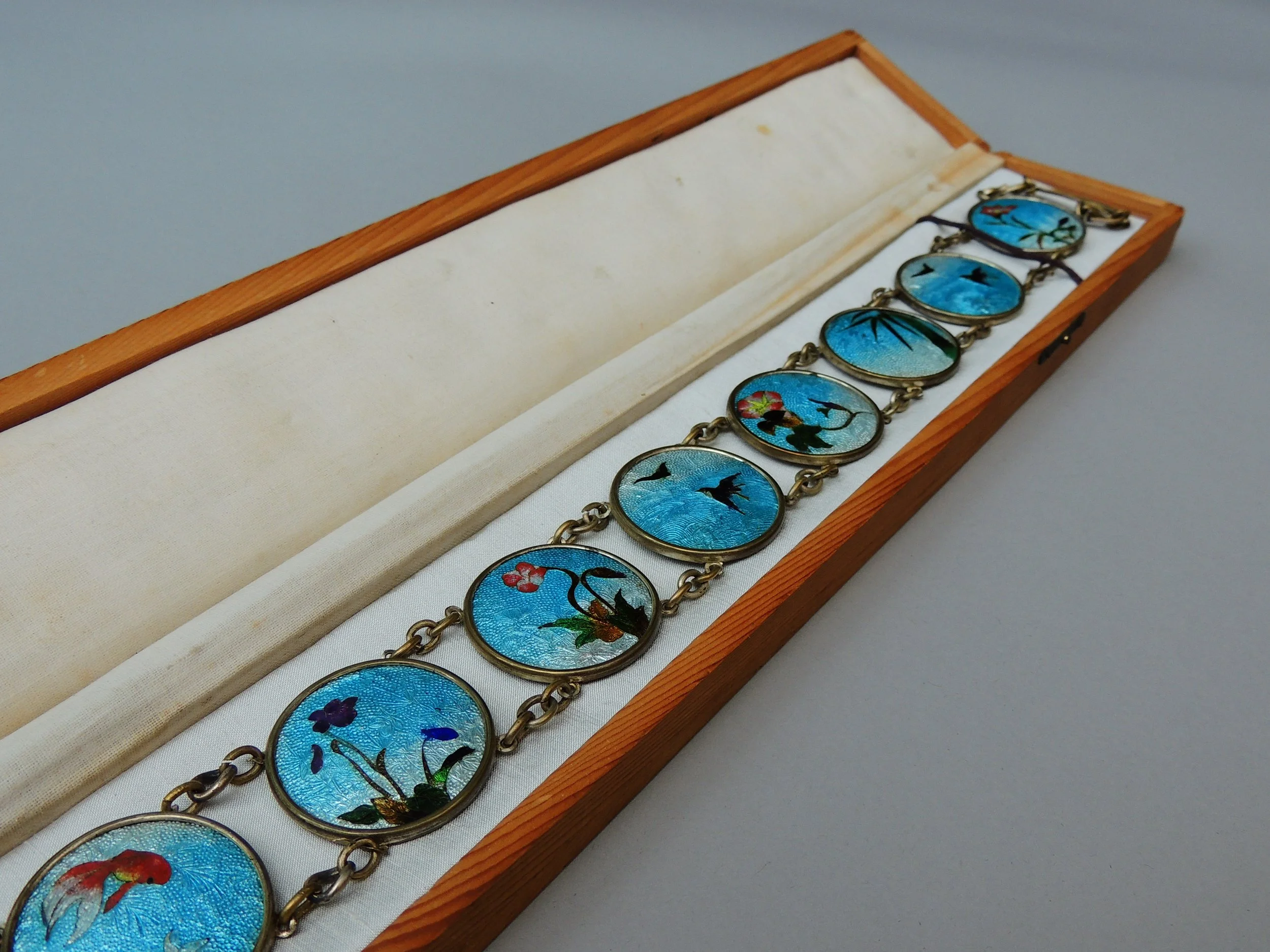Anonymous
Meiji period, 19/20th century
1868-1912
Dish
A large dish charger of a seated samurai surrounded by a geometric diaper on a blue ground, He has a war fan in his right hand and scroll in his left. The dish is surrounded in the most intricate geometric patterns all in gilt wire, the armour is mostly done in an extremely fine silver wire which is very unusual of the period of this dish making it at the beginning of the silver wire technique.
The samurai depicted on the dish is likely to be the hero Kusunoki Masashige (born 1294?, Japan—died July 4, 1336, Minato-gawa, Settsu province, Japan), one of the greatest military strategists in Japanese history. Kusunoki’s devoted himself to the emperor has made him a legendary figure representing loyalty and devotion. After the imperial restoration of 1868, a splendid shrine was erected to him on the site of his supposed death. (1294-1336)









